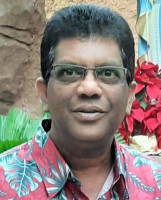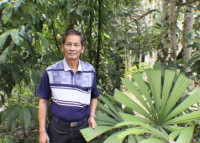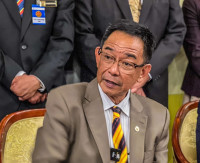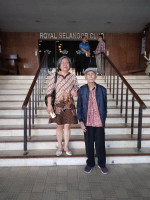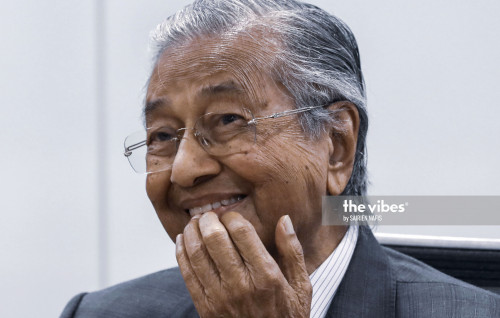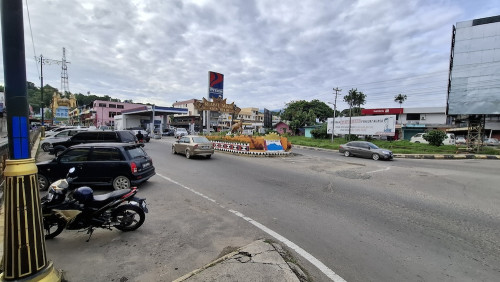SOMETIMES, we traverse the road less travelled nurturing a secret desire to achieve something, but only to serendipitously come around in a full circle, years later, to accomplish that “silent quest” on a jubilant note.
For retired teacher Dr Chong Pek Lin of Kuching this is how her love for the performing arts bloomed to fruition after her long and illustrious career as an educator – teaching science and maths in secondary schools and in her final posting as a music lecturer at the Batu Lintang Institute of Teacher Education (ITE) in Kuching.
Though retired in 2015, if one were to ask what she is today, she would say, “I am a freelance traditional ethnomusicologist cum music educator.
“I guess I actually work at the interface between these two fields. I am one who favours documenting and preserving ethnic music exactly as it is, right at its primordial source, while others might turn their nose up at this pursuit,” Chong tells The Vibes.
Chong still remains a compulsive researcher and volunteers her time and energy, and most of all, lends her prolific knowledge accumulated over more than 20 years of research on Borneo’s native music, indigenous musical instruments and dance forms. She is ever ready to impart rare insights on the esoteric music and dance forms of the natives living in the rainforests of Sarawak’s interior.

Chong is a regular at ITE, helping out the present students with their projects such as the Rainforest Fringe Festival where she led some students to host “Forgotten Sounds” featuring Kenyah songs and dances using ethnic instruments followed by a workshop.
Another project she helped the students to host was “Love Triangle in Ulu Baram”, offering seven Kenyah songs played using ethnic musical instruments and a poignant native dance sequence.
“I have also found happy collegiality with the International Kodály Society as their approach is modelled on the Kodály philosophy, which is to promote music education using local folk music and songs.”
Chong is also a member of the International Council of Traditional Music as well as the International Society for Music Education. She also dabbles in a bit of violin, Kenyah musical instruments such as sape and jatung utang, and is a lifelong student of choral and classical singing, as well as dancing such as ballet, folk and ethnic genres.
“Oh yes, I enjoy singing, mainly choral singing but I later took instruction in classical solo singing and finally obtained formal qualifications in this area after my retirement,” adds the multi-talented musicologist.
During her schooldays, Chong joined the school’s folk-dance club and also took ballet lessons for several years as a schoolgirl and later continued on as an adult. She was also involved in choreography to support concerts and musical dramas in school and college events and later coached the rhythmic gymnastics club in college.
Teacher par excellence
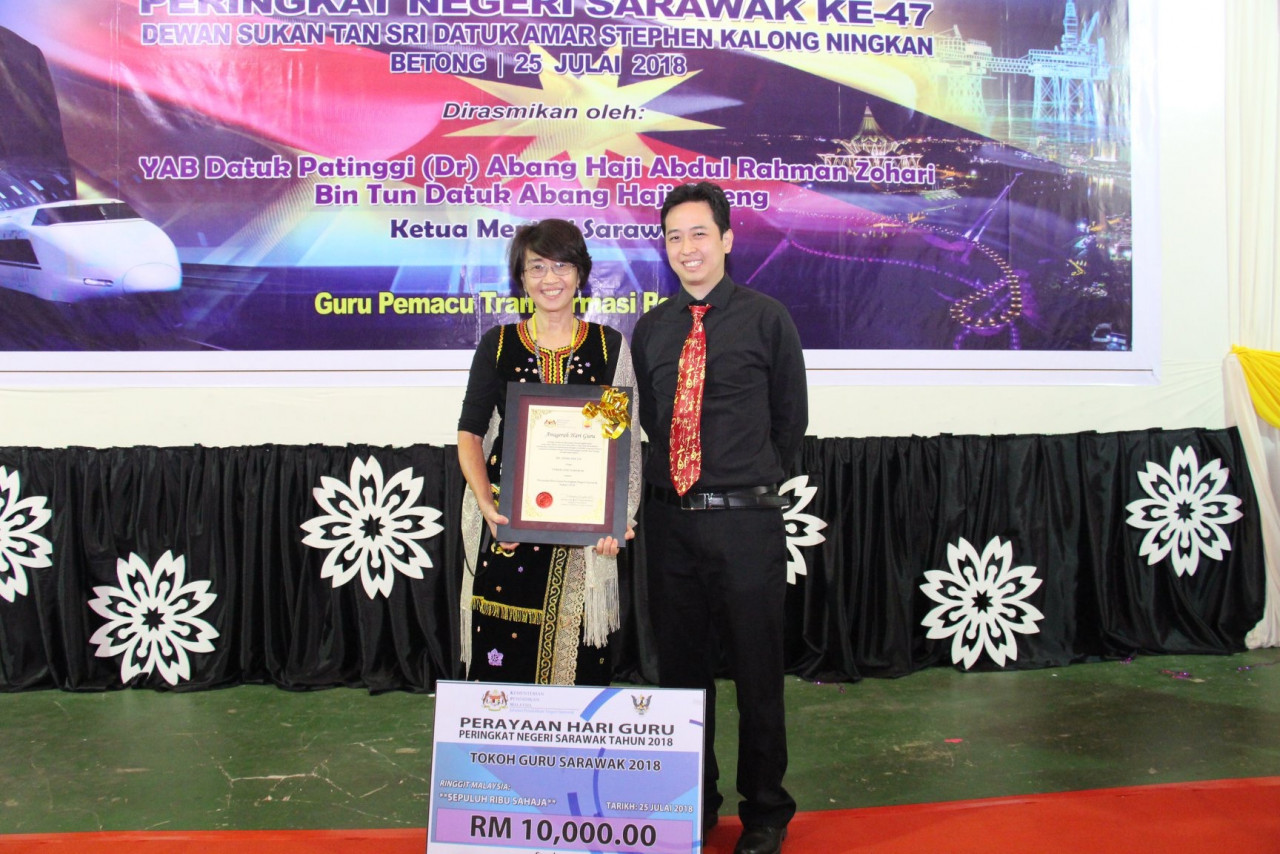
Chong had always wanted to be a teacher and a teacher, she came to be, enjoying every minute of it, even earning several accolades (too many to mention in this story) as an educator, reaching its highest pinnacle as Tokoh Guru Sarawak 2018.
Her teaching career began with an honours degree in chemistry from the University of Malaya and she went places as a teacher after earning a diploma in education.
“I chose chemistry, perhaps, our then misguided education system which perpetuated the myth that the ‘better’ students should take up science rather than the arts. So I chose the sciences more for prestige. However, I do appreciate the beauty of ‘neat chemistry equations’, and how the periodic table seemingly put everything in the universe into such tidy ‘logical’ categories.
“I have always had a ‘quiet inclination’ for the performing arts and my favourite subject in school was English Literature. I have also harboured a rebellious streak, determined not to follow in the footsteps of neither of my parents into their chosen career paths,” although her late mother was an accomplished piano tutor.
Chong’s father, the late Datuk Dr Chong Chun Hian, wanted to be a musician, more specifically, a music conductor. At that time, scholarships were offered for those who wanted to study medicine and so Chun Hian studied medicine in Singapore, later specialising in obstetrics and gynaecology.

But Chun Hian continued to engage in his love for music as a capable bass in his church choir. Chong’s mother, the late Datin Julio Chong Nee Wu was an accomplished piano teacher in Kuching, from whom Chong took lessons, and earned the Licentiate of Trinity College London (LTCL). This allowed her to earn pocket money as a part-time piano tutor.
Chong’s first assignment as a teacher was to teach chemistry and mathematics at a secondary school in Slim River, Perak. This took about a year and then she was off again to another school in Alor Star for a five-year stint before returning to her hometown, continuing her teaching career in yet another secondary school for six years.
“Yes. I spent 12 years in secondary schools as a science and mathematics teacher. In 1989 the teacher’s colleges in the country were very short of lecturers so they head-hunted for lecturers from the schools. At that time one needed only a bachelor’s degree or a diploma in education and at least five years of teaching experience to lecture at colleges.
“But for lecturing in music and fine arts, the colleges were so short of personnel that most of the existing music lecturers then did not even have degrees, just ‘specialist course’ certificates in music. So in addition to my degree and diploma in education, my LTCL was very valuable and came in handy as well. I was roped in straight away to lecture in music at the Batu Lintang Teachers’ College, now known as ITE,” says Chong.
But her quest to excel in the area of music knows no bounds. From 1995 till 1997 she took two years of “no-pay-leave” to earn a Master’s in the Applied Arts (Music) from Universiti Malaysia Sarawak, following which she obtained her doctorate in music from the University of Pretoria in 2013.
Kenyah music, songs hit the high notes
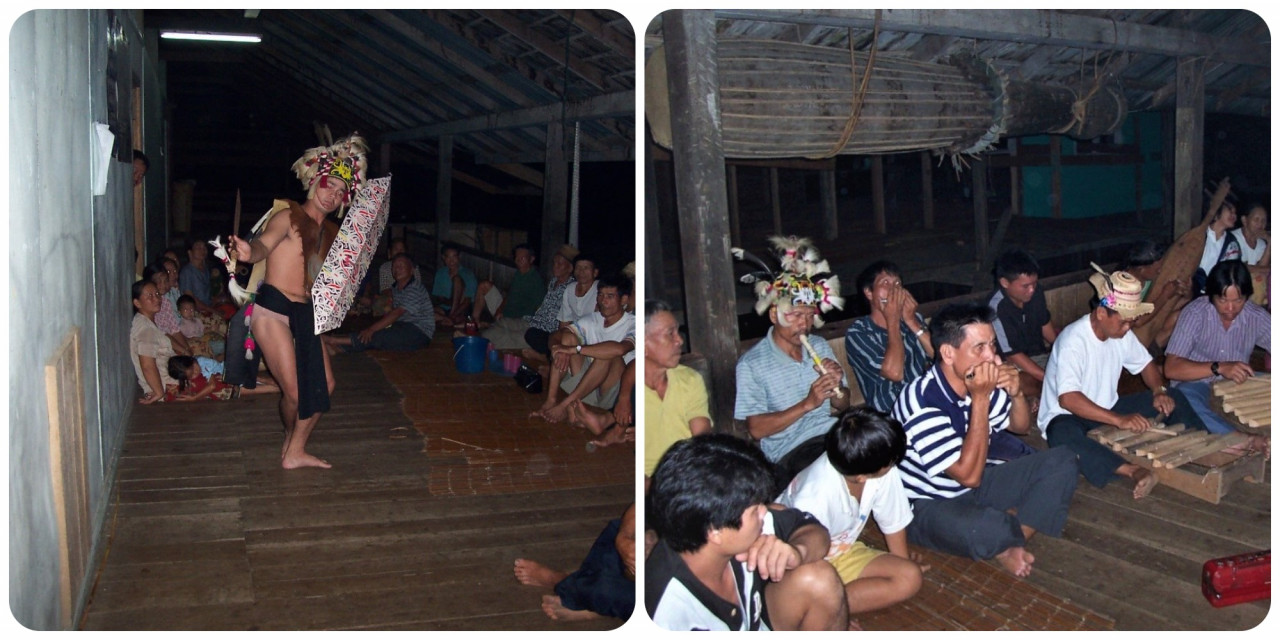
When Chong began her lecturing stint in music at ITE she realised that there was a dearth of local folk songs for use as subject material for teaching and learning.
She says a quick check at the archive's library of the Sarawak Museum indicated that the Kayan and Kenyah tribes sang folk songs that had a rich melody.
“So, I went to Kayan villages first but discovered their melodies were more limited, and they were more like epic recitals, whereas the Kenyah have a larger variety of melodies and harmonies in their songs and many of their music genres are for pure recreation, to make merry and for longhouse partying.
“I also made seven trips to Iban villages in Lubuk Antu and Sri Aman, but could not find any songs suitable for music education and choirs. But I found interesting information on Iban dances and their musical instruments though.”
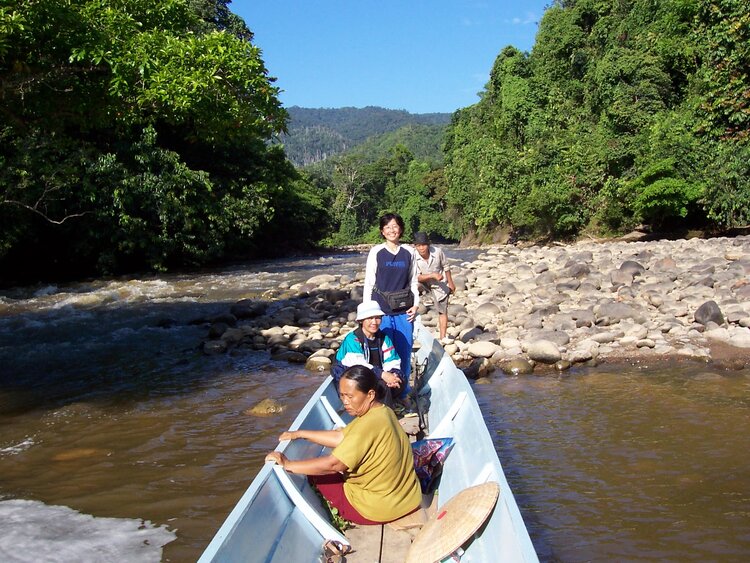
According to Chong, she had made epic trips to the interiors of Sarawak, including 19 trips to Ulu Baram and Belaga where the Kenyah natives are largely settled, sometimes bringing along her students to see firsthand a music culture at its primordial source and to work on music workshops and other projects in the nearby village schools.
Chong says all her jungle expeditions were accomplished over more than a 20-year period of prolific research – combining arduous rough riding over unfriendly terrain in 4WDs, boat trips over stomach-churning roller-coaster rapids – and living rough among the natives in their longhouses and partaking in their indigenous Orang Ulu cuisine and social life.
The end result of 20 years of research saw Chong publishing four books, eight articles published in prominent academic journals, and she had also presented 12 papers at international seminars, conferences and symposiums as well as two articles in e-magazines.

Chong’s first book published in 1998 is ‘Folk Songs of Sarawak: Songs from the Kenyah Community’ published by the Kuching Dayak Cultural Foundation. Her second book published in 2006 ‘Songs from the Baram: Kenyah songs from Upriver Longhouses’ published by the Sarawak Development Institute of Kuching in 2006 is now out of print.
Her third book, co-written with her colleague Anne Lajingga, titled ‘Introduction to Instrumental Ensembles and Folk Songs of East Malaysia’ was published by the Institute of Teacher Education, Batu Lintang Campus in 2011. The book features 10 Kadazan songs of Sabah and 20 Kenyah songs, complete with musical transcriptions and translations into English and Malay, along with descriptions of Iban, Bidayuh and Kenyah instruments. Audio recordings of all the songs can be found on the accompanying audio CD.
Her fourth book is the second edition of her first book, ‘Folk Songs of Sarawak: Songs from the Kenyah Community’. This new edition (2020) represents a greatly revised and augmented version of the original book and features original Kenyah lyrics and translations into English and Malay. Audio recordings of all the songs in the book are accessible from her website at www.peklinkenyah.com.
Song and music in the family
Chong had a very “performing arts-oriented” upbringing and grew up in a family that loves music.
“My dad loved music. That is how he met my mother who was the church pianist in Penang. Being part of the minority Hockchia clan, my father grew up in Sibu and left for Singapore to pursue medicine.
“At about that time, the Japanese invaded Malaya and Singapore, disrupting his studies and not being able to return to Sarawak, he hitchhiked from Singapore to Penang while the war drums were beating all around him.”
.jpg)
Chong, a mother of four, says both her parents were Methodist Christians and therefore so was the family.
“My dad often said that he loved the singing culture of the Methodist Church as our congregational Methodist hymnals always had music scores with hymns in 4 parts (part singing). He used to say, if not for this musical culture, he would otherwise switch to the Anglican or Catholic Church with their rich heritage-based rituals!
“As me and my siblings grew up, our home was a sort of ‘cultural centre’. It was the scene of numerous musical evenings and the rehearsal venue for many a concert. And many of these concerts were sponsored by the Kuching Rotary Club of which my dad was a member and at one stage the president.
“Perhaps, it was my mother who taught me all the technical skills for music, but my father nurtured my love for all the different genres of music. He had stacks of records of all the musicals, which we played constantly, and it was he who bought most of the songbooks from all over the world. But my mum was more focused on the classics.
“Among my siblings, just my two sisters, all of us play the piano. My eldest sister Angela Chong Pek Yoon, a pathologist in Singapore is also an established soprano singer, while my younger sister, Chong Pek Sian, an English language teacher in Melbourne plays the clarinet as well.”
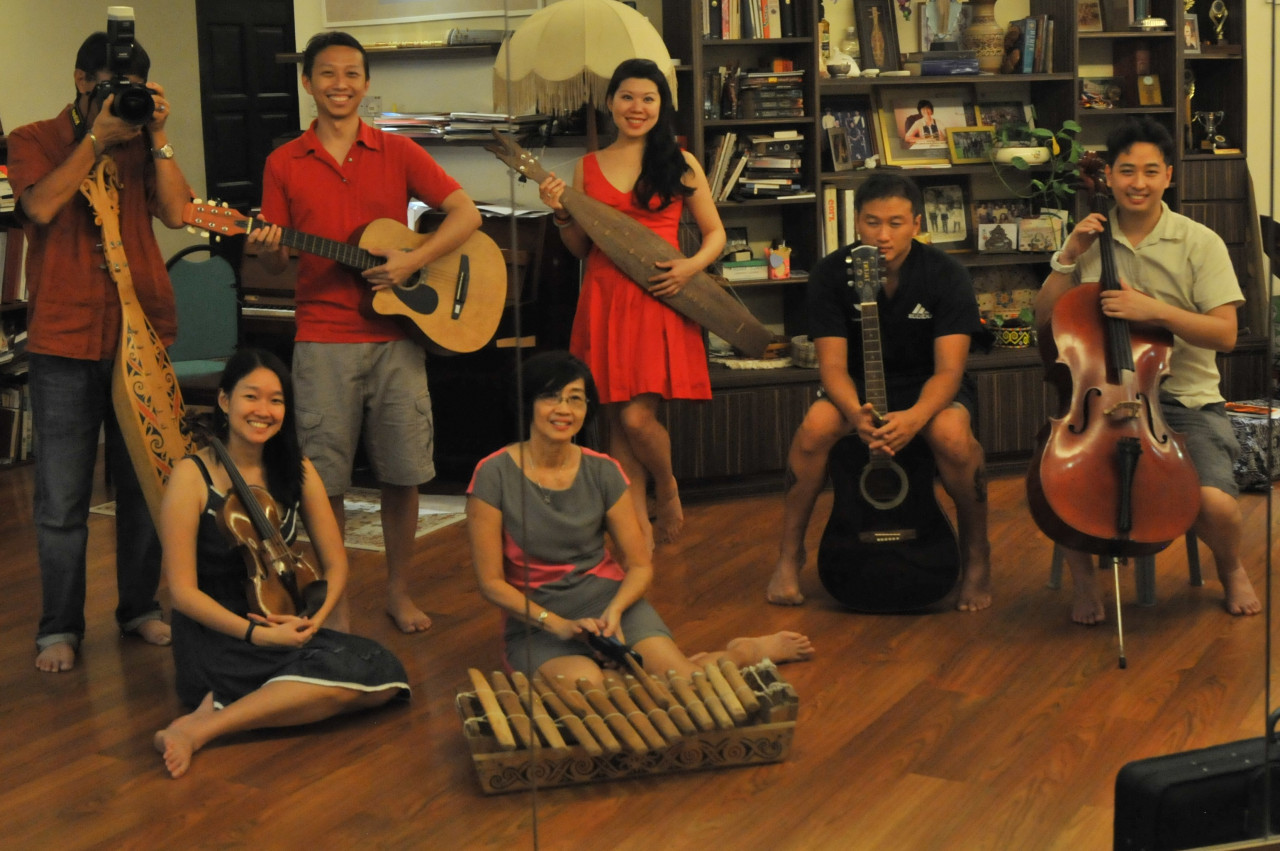
Amazingly, all of Chong’s four children are adept at playing at least two musical instruments, Chong says proudly.
“My eldest son, Philip Chin used to play the violin but now is also a keen guitarist in a band. Second son Nicholas Chin plays the violin for the Sarawak Symphony Orchestra and the piccolo in his school band.”
Interestingly, Chong’s third son, Darren Chin, an entomologist who is fascinated by ants so much, has taken a break from these gregarious insects and is playing the cello with the Sarawak Symphony Orchestra and also plays along with a string ensemble called The Prodigy Music Centre in Kuching.
Her only daughter, Julia Chin, is an accomplished violinist with a Diploma in Performance. Julia and Darren also sing in choirs.
However, Chong’s husband, Paul Chin, does not play any musical instruments although he has made musicians out of his children. But Chin is an ardent music fan and his passion is to listen to LPs.
“For the enjoyment of music, he has a dedicated music listening room,” says Chong, adding, “he was a great support to me in all my ethno-music research and has sometimes accompanied me to the Kenyah territory in the deep interiors.”
As I arrive at the conclusion of this lengthy feature, I cannot help believing that Chong and her family never ever wrote or put together a single narrative.
Chong in her mission to preserve the fading musical heritage of the Kenyah has taken it beyond the horizon.
Together with her musically-inclined family going back three generations, in themselves, they are “living narratives”, the paradigm of passion, dedication and sheer grit of perseverance, an enigma to behold. – The Vibes, April 19, 2021




